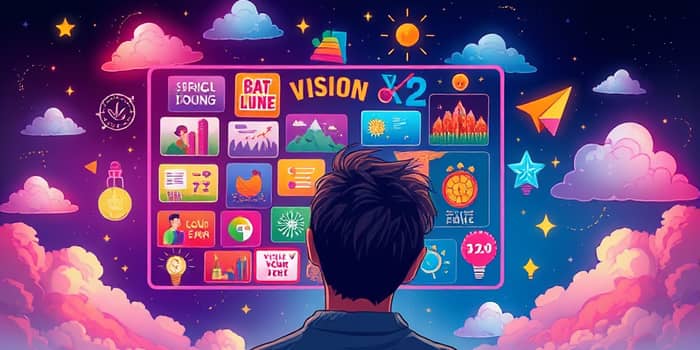
Long-term ambition often faces the challenge of dwindling enthusiasm, especially when immediate rewards are absent. Yet, by harnessing the power of imagery, we can create a dynamic mental environment that keeps motivation alive and thriving. In this article, we explore the scientific foundation, practical tools, and proven strategies that leverage visual stimuli to maintain focus and momentum toward enduring goals.
Research in neuroscience reveals that imagining an action and performing it share overlapping brain regions. When you activate the same neural pathways through mental rehearsal, the brain treats those scenarios as genuine experiences. This mental rehearsal and emotional connection not only strengthens neural networks but also fosters confidence by making future success feel more familiar.
Positive imagery has measurable effects on mood and resilience. Participants engaging in guided visualization report improved emotional regulation, higher nonverbal reasoning scores, and a robust sense of self-efficacy. By repeatedly envisioning yourself completing each step, you embed new circuits in your brain—a phenomenon tied to neuroplasticity and essential for sustained progress.
Not all mental imagery yields the same motivational impact. Experts distinguish two primary forms:
Studies demonstrate that students using process-based imagery scored roughly eight points higher on exams than peers who did not visualize, and six points higher than those who only pictured outcomes.
Translating theory into practice means choosing visual aids that resonate personally and are simple to revisit daily. Here are some effective methods:
Quantitative data underscores why visuals work. Below is a summary of key research findings:
These figures illustrate that integrating visuals into goal setting and performance routines yields measurable gains across diverse fields.
Creating a sustainable visualization practice requires consistency and creativity. Start by dedicating a few minutes each morning to visualize one small victory—completing a workout, finishing a report, or mastering a concept. Over time, gradually increase the complexity of your mental scripts, rehearsing entire workflows rather than isolated tasks.
Choose accessible formats: high-contrast images, simple diagrams, or short video loops. Keep your materials organized and update them monthly to reflect new goals or milestones. Pair visualization with journaling, noting emotional shifts and breakthroughs you experience. By tracking your mental rehearsals and real-life progress side by side, you reinforce the connection between imagination and achievement.
Encourage accountability by sharing your vision board or imagery practice with a trusted friend, coach, or group. Social reinforcement amplifies the drive to follow through, as discussing your visualizations out loud turns abstract images into commitments backed by community support.
Visual techniques are more than motivational kitsch—they are grounded in neuroscience, psychology, and empirical studies. By deliberately employing structured mental imagery exercises and crafting compelling visual cues, you prime your brain for success, manage stress, and keep inspiration close at hand. Whether you’re aiming to improve health, excel academically, or advance your career, a well-designed visualization practice can transform distant dreams into lived realities.
Adopt these methods, remain flexible, and refine your visuals as you progress. With manageable steps toward ambitious goals and vivid mental rehearsals guiding your path, you’ll discover that sustained motivation is not a fleeting spark but a flame you can nurture and grow for a lifetime.
References













